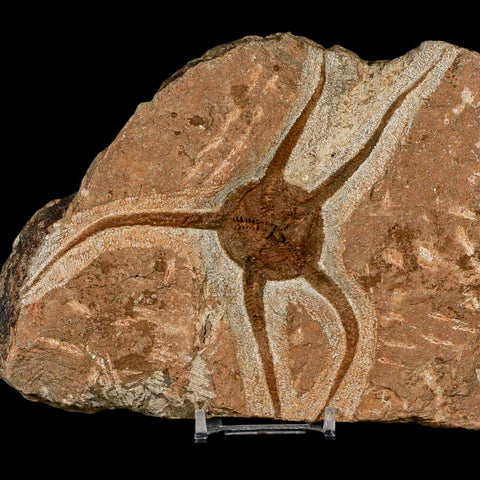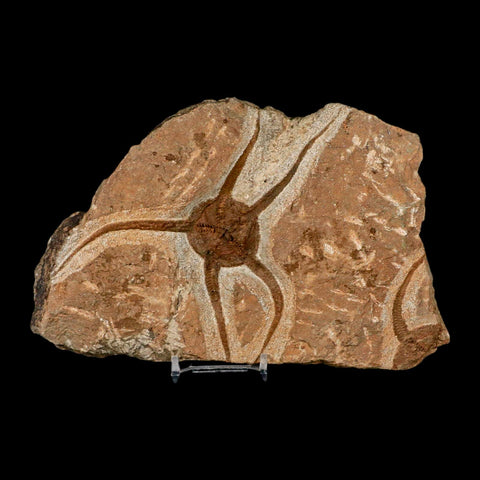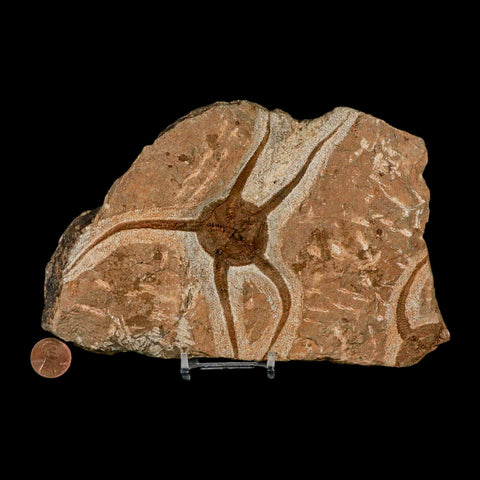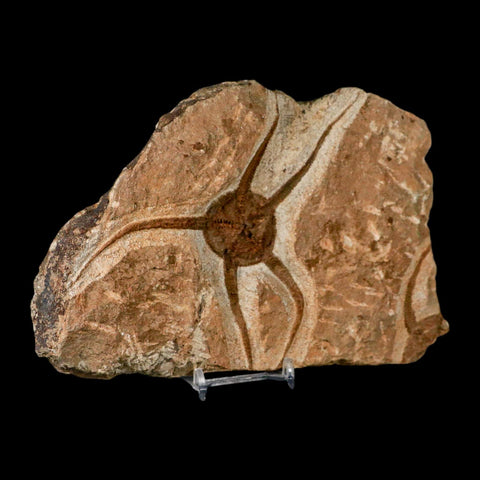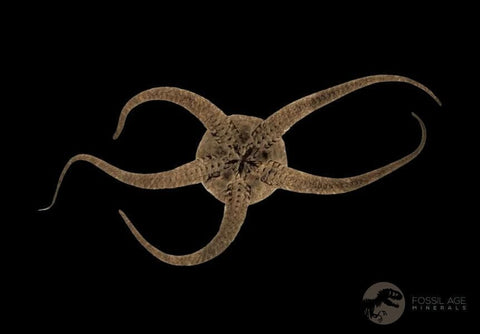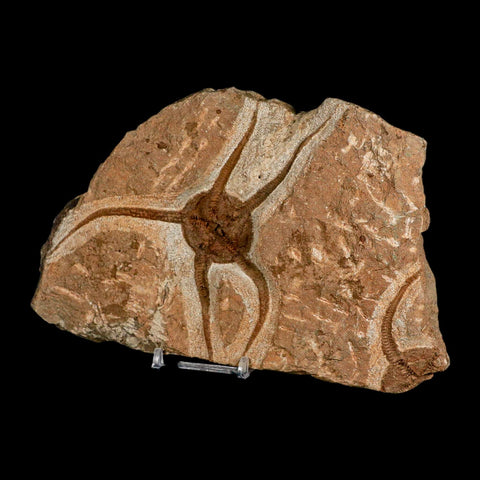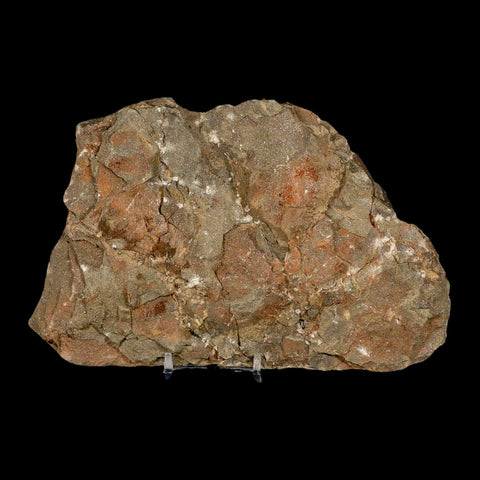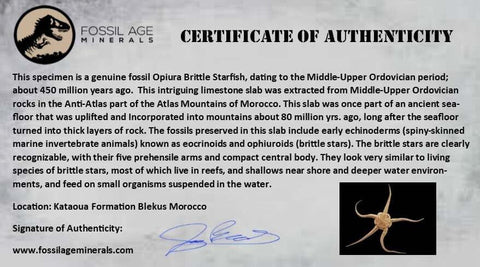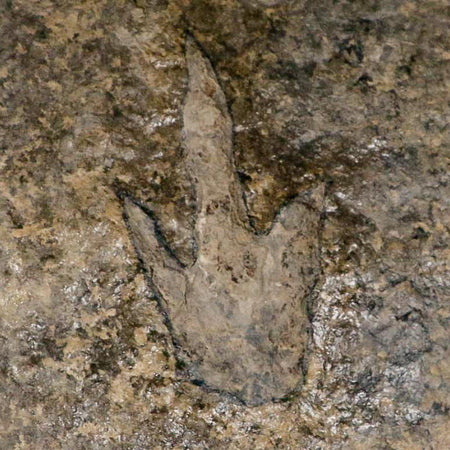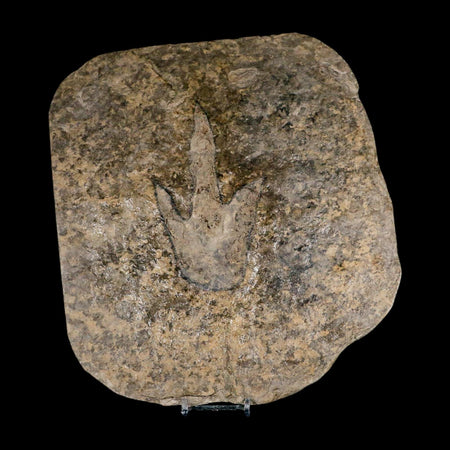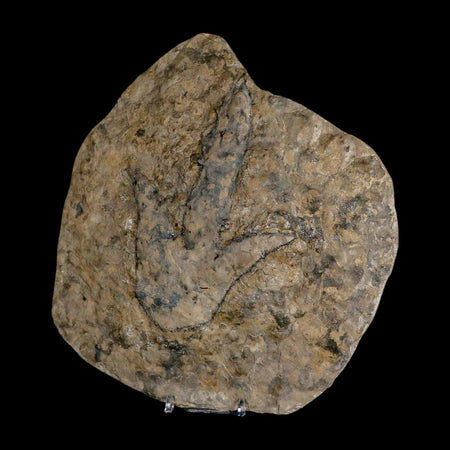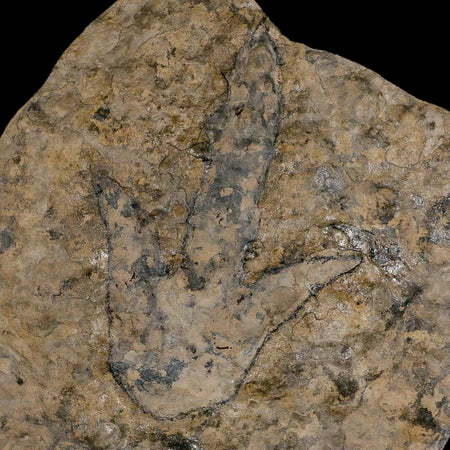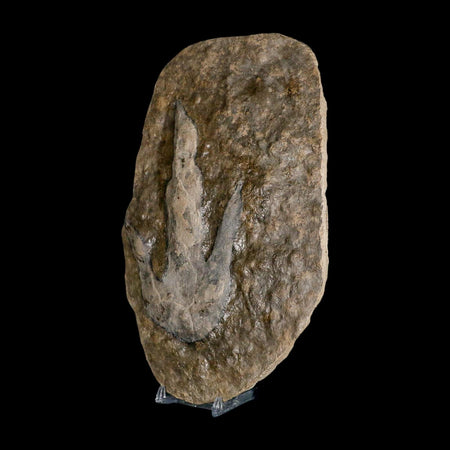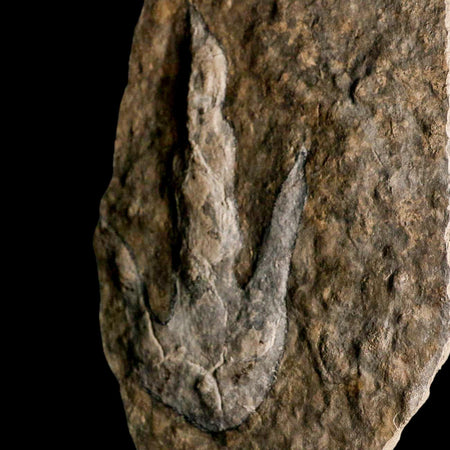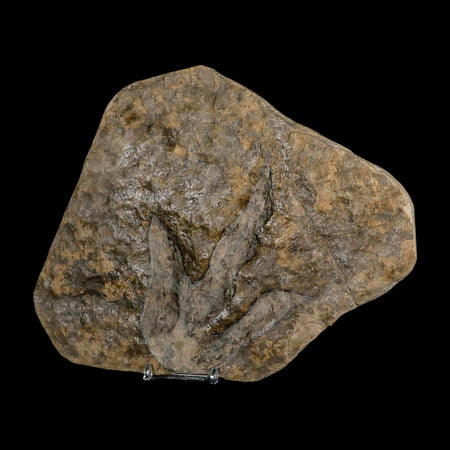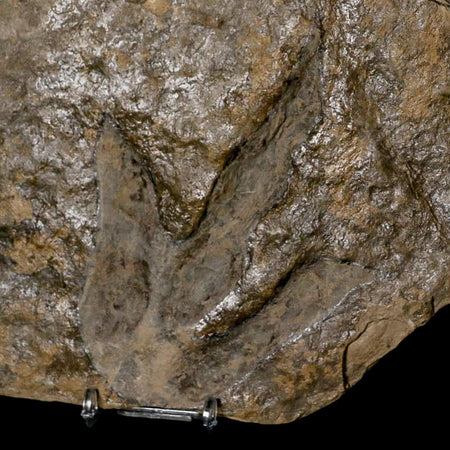4.5" Brittle Star Ophiura Sp Starfish Fossil Ordovician Age Morocco COA & Stand
Location: Kataoua Formation, Blekus, Morocco
Weight: 1 Pound 14 Ounces
Dimension: 7.5 Inches Long, 4.7 Inches Wide, 0.9 Inches Thick (Plate)
Starfish Dimensions: 4.5 Inches Long, 4.1 Inches Wide
Comes with a Certificate of Authenticity.
Comes with a Free Stand.
The item pictured is the one you will receive.
Brittlestar Ophiura Sp
Discover a captivating piece of Earth's history with this limestone slab, dating back approximately 450 million years to the Middle-Upper Ordovician period. Sourced from the Anti-Atlas region of Morocco's Atlas Mountains, this slab was once part of an ancient seafloor that was dramatically uplifted and transformed into mountains around 80 million years ago. Own a unique connection to a prehistoric world, preserved in solid rock for millions of years.
The fossils preserved in this slab include early echinoderms (spiny-skinned marine invertebrate animals) known as echinoids and ophiuroids (brittle stars). The brittle stars are recognizable, with their five prehensile arms and the compact central body. They look very similar to living species of brittle stars, most of which live in reefs, and shallows near shore and deeper water environments, and feed on small organisms suspended in the water.
Eocrinoids are distinctive creatures characterized by their long, slender, tapering stems and groups of arm-like appendages at the top. This fossil likely represents the Eocrinoid Ascocystites, a suspension feeder that obtained nutrients by filtering microorganisms from the water using these specialized appendages.
Despite the name, eocrinoids were unrelated to crinoids (sea Lilies) and differ in several morphological features from ancient and modern crinoids. However, like many fossil crinoids, their elongated stem allowed for attachment to hard substrates and the possibility of raising themselves higher off the seafloor.
There appear to be several larger individuals along with several much smaller ones. Those smaller animals may be juveniles of the larger form or a different species. Do you notice how the smaller individuals often seem to be in close contact with the brittle stars? We are often led to wonder whether the brittle stars were feeding on the smaller echinoids.

Please be aware of the nature of fossils:
Being buried under the ground for millions of years under tons of pressure tends to be rough. No fossil comes out of the ground whole and perfect. Most fossils have undergone some restoration, while others are altered by man simply to enhance their presentation in different ways. The workers in Morocco do a very professional job of unearthing and preserving these natural treasures. These are part of the natural beauty of the fossil and are not considered defects.


